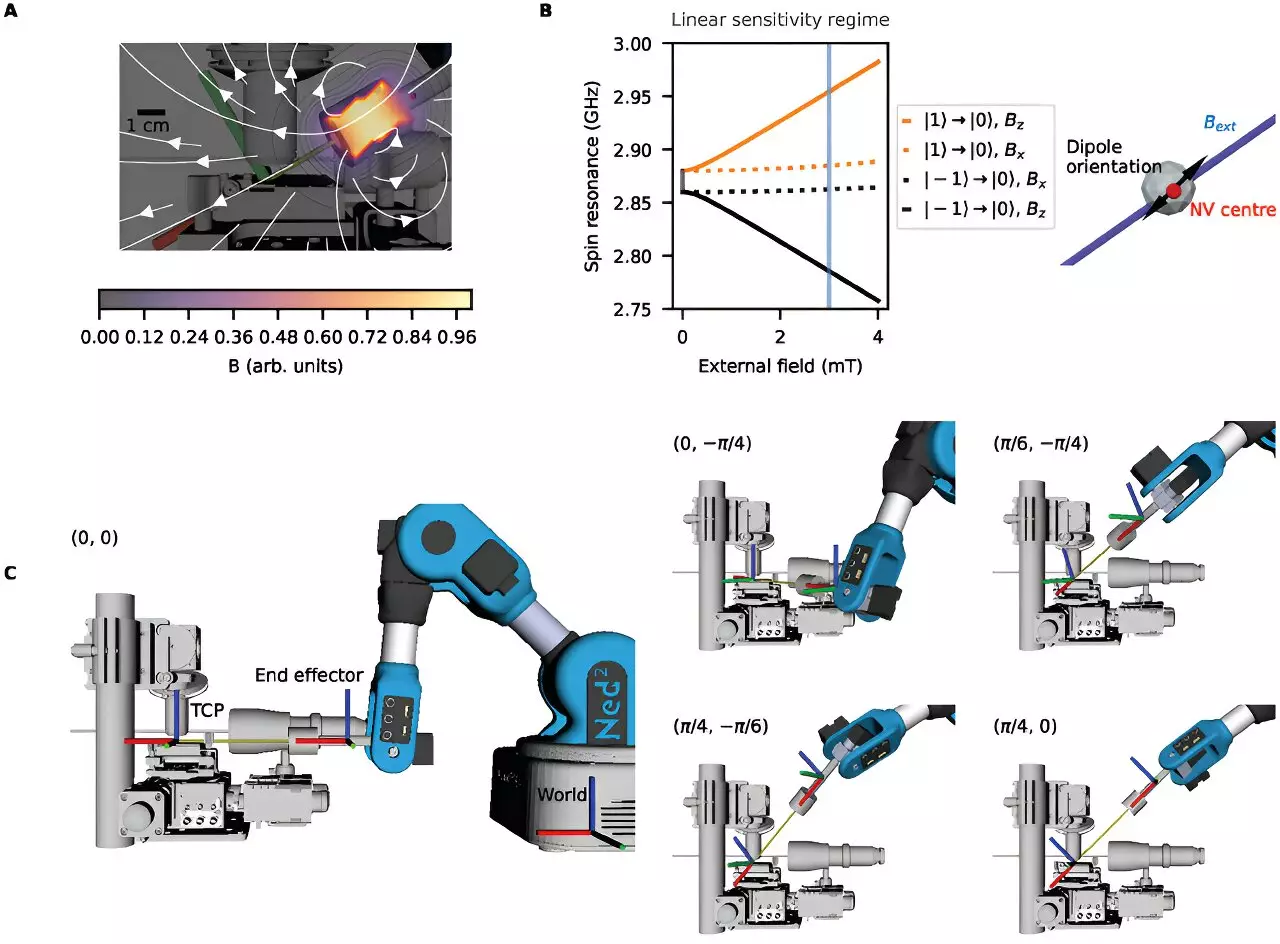Scientists conducting quantum research have been granted a groundbreaking tool that promises to accelerate their progress and enhance adaptability. Developed by the Quantum Engineering Technology Labs and the Bristol Robotics Laboratory (BRL) at the University of Bristol, a robotic arm has been constructed with a one-of-a-kind design that enables quantum experiments to be carried out with unparalleled speed, precision, and complexity. The potential real-world applications of quantum technology are vast, ranging from advancements in healthcare to space communications.
Quantum experiments often require highly controlled environments, combining ultra-low temperatures, atomic-scale interactions, and tightly-aligned laser beams. With the incorporation of robotic features into these experiments, scientists can now investigate them with increased prototyping speed, control, and reliability. This breakthrough will revolutionize the field of quantum research, making it more accessible and opening doors to unprecedented discoveries.
Lead author Dr. Joe Smith, a Senior Research Associate at the University of Bristol’s School of Electrical, Electronic and Mechanical Engineering, explained that traditional lab components would have been insufficient for their experiment. Therefore, they turned to robotics as a solution. By utilizing robotic arms, complex settings can be navigated with ease. The researchers illustrated the maturity of robotic technology in this context. Dr. Smith emphasized the potential impact of this innovation, expressing his hope that it would improve quantum sensing experiments and extend their practical applications, such as in the field of cell diagnostics.
The inspiration for incorporating robotic arms into quantum research stemmed from the increasing use of robots in surgical procedures, where they exhibit exceptional precision in navigating intricate areas of the human body. Co-author Dr. Krishna Coimbatore Balram, an Associate Professor in Photonic Quantum Engineering at the University of Bristol, explained that this research highlights the significance of adopting advancements from other disciplines, in this case, robotics, to propel quantum technologies forward.
The robotic arm incorporates a high-strength magnet, capable of positioning itself in any three-dimensional space at any angle, effortlessly maneuvering around obstacles. With the aid of tools such as electrodes, lasers, and mirror surfaces, these robotic arms enable precise alignment and manipulation for various experimental set-ups. This breakthrough not only enhances the accuracy and efficiency of quantum research but also broadens the scope of possibilities within the field.
Thanks to the pioneering work of the Quantum Engineering Technology Labs and the Bristol Robotics Laboratory, quantum research is poised to reach new heights. With the introduction of a robotic arm specifically designed for quantum experiments, the limitations previously faced by scientists have been shattered. Speed, detail, and complexity are no longer hindrances but catalysts for progress. The integration of robotics into quantum research opens up a vast array of potential applications and paves the way for groundbreaking discoveries in various fields. This revolutionary invention propels quantum technologies forward, shedding light on the immense potential they hold for the future.


Leave a Reply